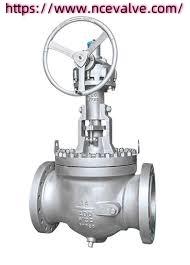Can Lift-Then-Rotate Mechanisms Reduce Industrial Maintenance?

In the evolving landscape of industrial fluid control, Naishi, an Orbital Ball Valve Maker, has pioneered designs that balance operational efficiency, safety, and environmental compliance. Their orbital and orbit valves integrate precise movement, robust sealing, and reliable performance, positioning them ahead of conventional valves. Engineers and operators increasingly recognize that innovation is no longer optional—it ensures compliance and maintains system integrity in demanding conditions.
Compared to traditional gate, globe, and ball valves, orbital designs offer unique motion principles that reduce friction, wear, and maintenance requirements. Tilt-and-turn and lift-then-rotate mechanisms provide smooth actuation while minimizing torque fluctuations. This allows systems to handle varying pressures and temperatures without compromising longevity. The result is fluid management that is stable, predictable, and efficient, even under heavy industrial loads.
Environmental considerations and regulatory trends have reshaped valve manufacturing. Regulations limit emissions, restrict chemical leakage, and demand energy-efficient operations. Modern valves must not only control flow but also prevent leaks that could endanger workers or contaminate ecosystems. Orbital valves, with tight sealing and controlled motion, naturally align with these requirements. Industries adopting such solutions demonstrate responsibility while maintaining productivity.
Material selection further reinforces compliance and durability. Advanced alloys resist corrosion, thermal expansion, and pressure cycling, ensuring valves remain effective under harsh conditions. Coatings and surface treatments reduce wear and chemical interaction, extending service life. By combining engineered precision with thoughtful material choices, orbital valves maintain consistent operation while meeting environmental expectations.
Automation and digital integration elevate performance. Sensors and control systems monitor valve positions, torque, and flow rates, allowing real-time adjustments. This intelligence reduces human error, enhances safety, and ensures regulatory standards are met. Operational efficiency and regulatory compliance are no longer competing priorities—they function in harmony through design.
Industries increasingly value these attributes in energy, chemical, and water treatment facilities. Orbital valves provide measurable advantages in leak prevention, maintenance reduction, and environmental stewardship. Their performance across diverse applications demonstrates that careful design can achieve both operational and regulatory goals without compromise.
The evolution of industrial valve systems suggests that adoption of orbital principles is no longer a niche choice. Instead, they represent a forward-looking strategy that blends mechanical innovation with environmental accountability. Companies integrating these valves experience operational stability and regulatory alignment simultaneously.
Ultimately, the success of these valves rests on thoughtful engineering, material integrity, and environmental awareness. Through careful design, testing, and precision manufacturing, orbital valves exemplify reliability while addressing modern industrial challenges. For a closer look at solutions from Orbital Ball Valve Maker by Naishi, explore https://www.ncevalve.com/product/.




